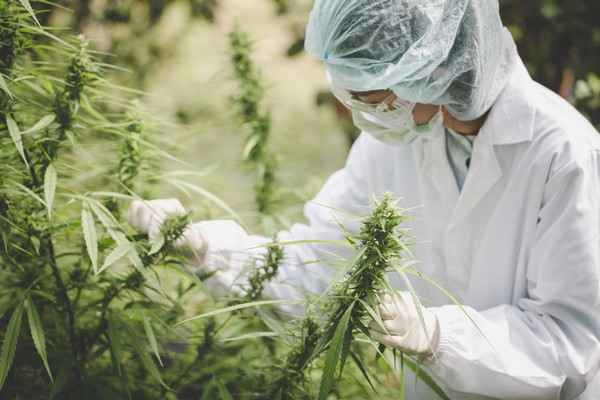The cannabis plant is very responsive to environmental conditions. Reactions to an environment differ depending on the type of stress experienced by the plant. It should be known that not all the stresses are necessarily negative, and growers are learning how to exploit the environmental levers to push plants to express their full genetic potential. There are different practices to drive growth (biomass gains) and development (how the plant takes shape) of the plant through the application of different types of interventions, which is called crop steering.
“The aim of crop steering is to direct the photosynthetic resources to better support yield and quality,” says Edwin van der Knaap, SVP, Crop Consulting at ALPS. “Crop steering is about driving the growth of the plant so that it develops an end product in the way the grower needs it to best satisfy their client base.” Of course, Edwin takes care to point out that crop steering is not about forcing the plant to grow in specific ways, but rather gently pushing it in the direction the grower wants to deliver on.
Importance of Minimizing Stress at the Beginning of a Cannabis Cycle
“The first and most important thing is to ensure the purity of the source material,” Edwin explains. “That’s why most growers work with clones, as a properly executed phenotype selection would provide stable genetics. Once that is settled on, the first part of the cultivation should have no stress at all. With minimal stress, the plant can safely and freely develop those characteristics that will support it throughout the cycle, making it capable of adapting to specific types of interventions.” As Edwin continues to explain, there are different ways in which a grower can induce a sought-after impact on a cannabis plant's development.
Crop Steering Principles
“One of the most elementary interventions for inducing stress is to change the lighting schedule,” he says. “It is understood that the duration of the dark time is a way to trigger a plant to flower: >=12 hours of darkness triggers the generative phase. With this, we come to the first crop steering principle: optimal plant density is related to available daily light integral (DLI). The higher the canopy density, the higher the DLI required. The goal is to achieve a plant that has smaller stems with many flowers rather than a plant with a huge primary stem. With smaller stems and many flowers, it shows that most of the energy has gone to yield and quality, and not into biomass and its associated maintenance respiration.
In order to promote uniform bud/flower quality across the canopy, the light extinction factor (fraction of light absorbed by the canopy ) should be managed. A certain percentage of the light should reach the bottom of the canopy, which promotes flower quality and potency. Therefore, some growers may choose to perform some defoliation by removing excess foliage. Other growers may choose to grow a very short stature plant without any defoliation. However, the minimal intervention is to strip the side branches at the very bottom, allowing all the other branches to reach for the top of the canopy. A grower can also decide to top at an early stage, prior to going into the short day, or a grower can top at a later stage. This would allow the lateral branches to develop uniform flowers."
However, there is more than light intensity and the photoperiodic cycle when it comes to interventions.

“When looking at resin, one might dose low nitrogen in the late cycle to promote the development of resin,” he says. “One may also consider including silicates in the feeding schedule. Trichomes are the most vulnerable when there is an absence of silicate, and as a result, more trichomes are lost during the processing phase. By providing the plant with silicates, flowers and trichomes would then have the necessary elements to support the expression of their full genetic potential.”
Importance of Facility Design and the ALPS Difference
These are just some of the crop steering techniques for cannabis plants. Yet, there is something of the utmost importance that growers must rely on: “You need to have a well-designed facility,” Edwin points out. “If you are looking to achieve a certain output, you need to have a suitable cultivation infrastructure. That’s exactly what we do at ALPS; we support growers with site visits and share our knowledge and expertise on how to get the best results. Additionally, we provide growers with remote guidance, and by checking climate computer settings, we can assist them with reporting and documentation of best practices."
The APIS Team at ALPS assists growers with data management as it is essential to know how to interpret it. “Raw data doesn’t necessarily present you with information, you need to process and interpret it.” he continues. “We set everything up to precisely measure crop’s light-use-efficiency, and this is a continuous improvement that we can highly facilitate. It is critical for data to be real-time and information to circulate properly in a cannabis operation, especially because you want company stakeholders and management to have a full understanding of what’s going on within the business. Oftentimes, it is difficult to convey cultivation reports effectively, which is the heart of any cannabis cultivation. A successful cannabis organization recognizes that cultivation has to be the core competence of a cannabis business; if you don’t have that, how can you be successful?”
For more information:
ALPS Inc.
www.alpsmj.com
